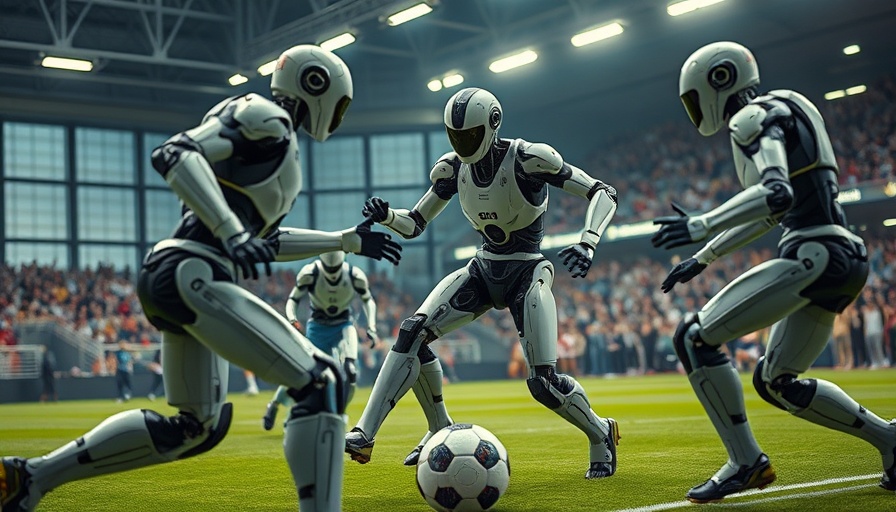
When Robots Play Soccer: An Unprecedented Showdown
The inaugural RoBoLeague robot soccer competition held in Beijing on June 28, 2025, showcased a thrilling new frontier in sports entertainment. While the Chinese men’s soccer team struggles to attract fans, the true stars of this event were the autonomous humanoid robots, whose performances captivated the crowd more than any human athlete possibly could. Powered entirely by artificial intelligence (AI), these robots delivered an experience that hints at a dynamic future where machines not only participate in sports but excel in them.
AI and Robotics: The Tech Behind the Game
Each humanoid robot competing was based on the T1 model developed by Booster Robotics and was designed to operate completely independently on the soccer field. Equipped with state-of-the-art visual sensors, these robots could accurately detect the ball and maneuver swiftly around the pitch, highlighting the advancements in machine learning and AI. Brought to life by complex algorithms, their AI-driven strategies led to entertaining matches, despite some hiccups along the way—like robots requiring assistance when they fell.
Soccer Meets Technology: New Horizons
The RoBoLeague not only entertained but also served as a proving ground for the latest innovations in robotics. Cheng Hao, the CEO of Booster Robotics, emphasized how sports competitions are ideal for testing humanoid robots, enabling rapid development of both hardware and software solutions. With each match, insights are gained that help refine the technology, pushing the limits of what robots can accomplish.
The Future of Robotics in Sports
As humanoid robots gain traction in the realm of sports, the implications extend far beyond mere entertainment. The acknowledgment that such competitions can serve as crucial testing grounds for AI technology lays the groundwork for their potential integration into various sectors. From enhancing training methodologies to revolutionizing how sporting events are conducted, the artificial intelligence embedded in these robots holds promise for creating safer and more efficient systems.
What This Means for AI and Machine Learning Advancements
The excitement generated by the RoBoLeague raises questions about the future role of AI and machine learning in everyday life. As robots become more adept at human-like tasks, society will need to grapple with both the positive possibilities and the ethical dilemmas presented by autonomous systems. The balance between innovation and potential risk represents an ongoing conversation that will shape the development of robotics in various fields.
Conclusion: The Excitement of the RoBoLeague
The debut of the RoBoLeague has not only spotlighted the capabilities of humanoid robots but has also invigorated interest in soccer within China. For both spectators and tech enthusiasts, it marks a significant moment where sports and technology converge, promising a future filled with unexpected collaborations.
The robust performance of these robots at such an early stage suggests significant advancements are yet to come. We are left to ponder—how will these innovations redefine sports as we know them?
 Add Row
Add Row  Add
Add 




Write A Comment